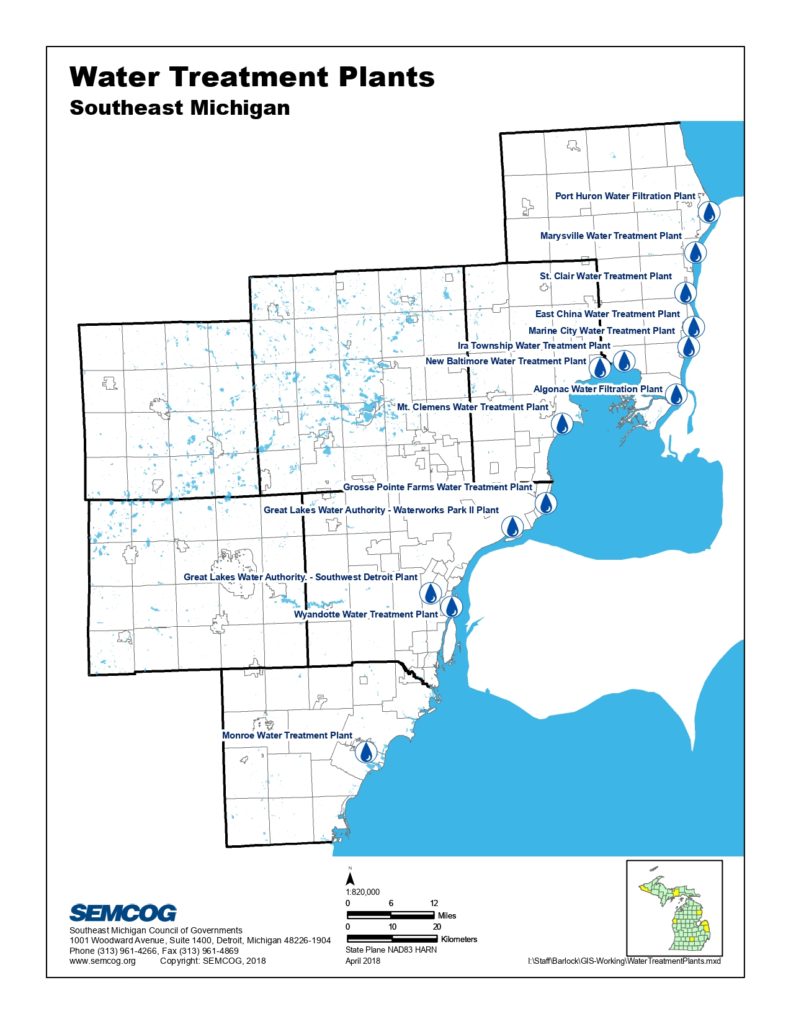In Southeastern Michigan there are 14 wastewater treatment plants that did, and plan to again, participate in a real time water monitoring system. This real time water monitoring system would span from Port Huron to Monroe, from where Lake Huron meets the St. Clair River down to Lake Erie. The purpose of the system is to better ensure the water basin that provides drinking water to more than 3 million people remains clean, and if there is contamination, those who run the water plants could shutoff intake to ensure contaminants do not enter the drinking water.
Current events in Southeastern Michigan, such as the collapse of a site into the Detroit River that is potentially contaminated with uranium and the leaking of green hexavalent chromium ooze onto I-696 near stormwater drains, are a reminder of just how easily our waterways can become contaminated. While steps certainly need to be taken to avoid contaminants entering our waterways, a full scale real time water monitoring system is also vital for public health. However, that has not always been a priority.
The real time water monitoring system was first established in 2006 with $3.5 million in funding provided by the federal government; local governments at the county and municipal level also initially chipped in. However, by 2011 the system was no more as funding dried up. The reasons? According to a 2016 MLive article, local communities did not have the funds to allocate toward the operation and maintenance of the system and would not pass the operational charges along to the ratepayers. Additionally, a 2012 Municipal and Sewer Magazine article stated that some of the communities along the Huron to Erie water real time water monitoring system corridor were concerned about the data the system was producing and wanted to invest money in their own systems, not a regional one.
Since 2011 the region has been left without a real time water monitoring system due to lack of and interest in funding. That is until in 2017 when then Gov. Rick Snyder allocated $375,000 in his budget. The Southeastern Michigan Council of Governments (SEMCOG) has since been charged with procuring and installing the water monitoring system. According a SEMCOG representative, the updated installation of the system is near completion and they hope to have real time data from it pushed to public in the near future. In December they gave no indication that any of the stations were running, just that a stakeholder meeting would be happening in the near future.
While the re-investment in the system gives way to updated infrastructure needed to protect our waterways and public health, as the story of the system’s past shows, regional investment and collaboration will be necessary for its success. As of the beginning December, no funds beyond the 2017 investment by the state had been allocated to the system and staff at the Michigan Department of the Environment, Great Lakes and Energy were unaware of the system and its funding. Funding options may vary in keeping the system operating-whether it be surcharges passed on to ratepayers, additional taxes levied or additional funds found in government budgets. However the funds are found, they need to be allocated to protect the public health of the region and cleanliness of our greatest natural asset.
If the communities along the Huron-to-Erie water basin don’t come together to collaborate at a regional level to keep this system running, history could repeat itself leaving the region without a system to protect our health.
The image below was provided by SEMCOG and shows the locations where the real time water monitoring system sites will operate from, which are water treatment plants throughout the region. These sites were also part of the original system that was established in 2006.
